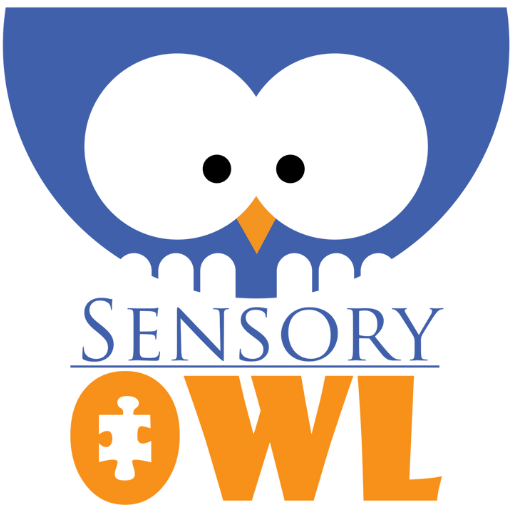
The importance of understanding sensory issues faced by autistic children
Share
written by Rayan Stanislaus

From the second you learned of your child’s Autism diagnosis, your reaction may have been a sequence of emotions; sadness, guilt, acceptance and fear. Fear is the constant here. You clinched your child towards you as you looked at the space around you and suddenly the world seemed bigger. To put it into perspective, it takes you back to the day on which your child was born and you held your little human for the very first time.
The world and all its inhabitants were now alarmingly unpredictable and hostile! Or, so it seemed to your new, protective and hormone-driven brain. When your child is diagnosed with a disability such as ASD, you also notice how much the world is remarkably standardised. A lot of times, it may seem like your child does not fit into the societal box of ‘good-natured children.’ Many questions swarmed into your brain. You asked yourself if the world will be kind to your child.
Delays in diagnosis
According to the British Medical Association, 1 in 100 children in the UK has a diagnosis of ASD. Despite the alarming statistics, the BMA has noted the exhausting delays in diagnosis and inadequate support to families. In 2018, at their annual representative meeting, the BMA members raised an alarm on the lack of assistance to young people with ASD through education. Without a doubt, having a thorough understanding of sensory overload and sensory diet in ASD is key when it comes to providing effective support.

In my case, it was my nephew who was diagnosed with ASD. My parents took on the responsibility of caring for two babies at retirement age while his parents worked. I also played an active role in their lives in ways that can be compared to a parent. I am more than an aunt, I am ‘Auntywah,’ according to them, who never got my name right. Like most parents, we knew that my nephew was different at an early age. However, we were all perplexed on what to do next.
The Caribbean is even further behind in terms of providing support through education on ASD and ADHD. Despite that my nephew had obvious signs of both disabilities, it took him eight years to get diagnosed with just one. We are still waiting to see if he will be diagnosed with the other. Unfortunately, despite knowing that he was different before a diagnosis, we were at a loss on how to manage the situation because we did not have an understanding of how over-stimulation affected his behaviour.
I remember being overly ambitious when he was a baby, I attempted a game of peek-a-boo with my very unbothered nephew. He barely looked at us and when we were lucky enough to have him raise his eyes at us, he quickly turned away. How awful must it have been for him to see me waving my arms hysterically as I very badly sang nursery rhymes. He was a baby who seldom cried...but he cried for that!
‘Unbothered’ grew into extremely bothered. The once quiet and ‘unbothered’ baby grew into a very, very emotional boy. At the age of two, we had stopped going to crowded places due to his distressed behaviour. It took us years to realise that these were not tantrums, rather they were meltdowns. Meltdowns differ from tantrums as the former is brought on by extreme distress from an overwhelming situation. Screams, self-harm and parent-harm! Who knew that a child can hit so hard or fight back so strongly as you try to rush him/her to the sanctuary of your car?
Sensory overload
If you are like me, you were probably in tears while trying to process this type of behaviour. After all, we have all heard about the bad reputation of two-year olds. I was at odds and often hoped that it was typical toddler behaviour. During a meltdown, the senses of children with ASD may become too stimulated for them to process. This is what you call sensory overload. Taste, sounds, sights and even textures can trigger a meltdown and leave you feeling like you are walking on a minefield with your child. Your child is not doing it on purpose to challenge you.
According to the National Autistic Society, Autism can affect people differently as it is a spectrum condition. Therefore, not every child with ASD will react the same, even with the same trigger. Like many, you may have asked where did your child fit in this spectrum? How many times have you re-traced a map in your head and tracked the sources of your child’s triggers before receiving a diagnosis? Was it a bell ringing? The chair fabric? In my nephew’s case, crowds were one of his biggest triggers.
According to Kim Davis M.S. at the Indiana Resource Center for Autism, people with ASD can be crippled in numerous ways due to stress and anxiety. My nephew is at his calmest when he reads, draws and builds in silence. On the other hand, he is at his most distressed when he feels like his environment is clustered and out of control.
Sensory Diet
The key to providing the optimal environment for your child is to map his/her patterns in behaviour, identify triggers and minimize them. Another important task in supporting children with ASD is to develop their sensory integration. This promotes the development of the correct transmitters in their brain and stimulate growth in their information tracks. Sensory diets are a carefully mapped-out combination of physical activities that are crafted and tailored to fit the specific needs of your child.
Tools like weighted blankets are recommended by occupational therapists for children with ASD and ADHD. They help with calming your child by providing a proprioceptive signal to the brain. Weighted blankets are widely used within sensory diets to promote overall well-being, reduce stress and anxiety, improve sleep patterns and give the child a sense of control.
‘It takes a village’

If parents, caretakers and teachers are equipped with sound knowledge on how sensory diets can support children with ASD, it can eliminate stress and frustration within families, most importantly, from the child with ASD. Having an understanding of sensory overload and providing a sensory diet to my nephew helped us create the optimal environment for him to thrive. Weighted blankets are a popular tool used by parents, caretakers and occupational therapists to generate a positive growth in their children’s sensory integration.
Hang in there! We are all still learning. It’s true that it takes a village to raise a child. Luckily, my nephew has the support of everyone around him, including Me, his Auntywah.
Additional Links:
British Medical Association
Autism Spectrum Disorder
https://www.bma.org.uk/what-we-do/population-health/child-health/autism-spectrum-disorder
What triggers anxiety for an Individual with ASD? Kim Davis M.S. 2012 https://www.iidc.indiana.edu/irca/articles/what-triggers-anxiety-for-an-individual-with-asd.html
Healthline
https://www.healthline.com/health/adhd/autism-and-adhd#adhd-with-autism
Amanda Morin- The difference between Tantrums and Meltdowns
